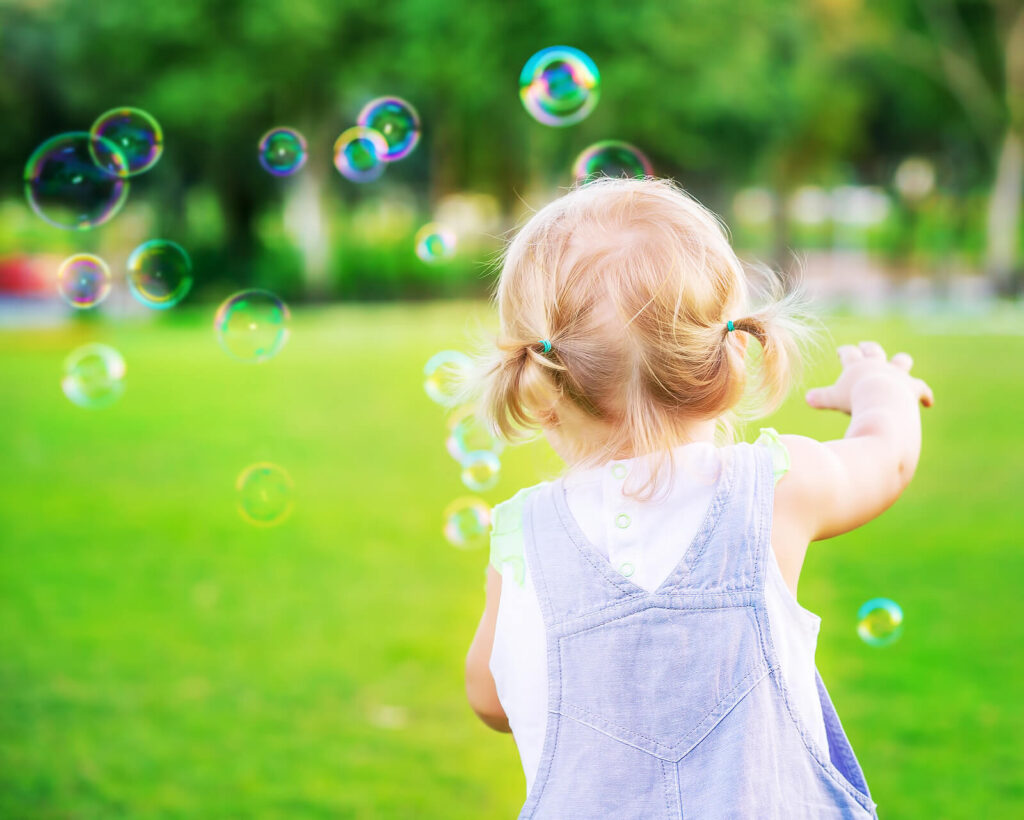As a successful woman navigating the complexities of New York City life, you’ve likely experienced your fair share of relationship challenges. Whether it’s a romantic partnership that seems to follow a familiar, frustrating pattern, a friendship that feels inexplicably strained, or even dynamics with colleagues that leave you questioning your worth, you may have wondered why these interactions play out the way they do.
The answer might lie in something you’ve never considered before: your attachment style. Attachment styles shape our relationships in profound ways, influencing everything from how we communicate and handle conflicts to how we experience intimacy and trust. Understanding attachment styles can be a game-changer, offering insights that can begin to positively transform your relationships.
I’ve been a psychotherapist for over ten years, and relationships are my specialty. I’ve worked with countless individuals who struggle in their relationships. They want to understand their patterns, and they want to overcome their challenges. This discovery and healing process is the heart of my work, and it necessarily involves understanding attachment patterns.
In this post, we’ll dive deep into the world of attachment styles. You’ll learn about the four different styles of attachment, how attachment styles develop, and how they influence your relationships. You’ll learn how to discover your own attachment style as well as what is involved in the work of changing your patterns. Whether you’re looking to improve your romantic life, strengthen your friendships, or navigate professional relationships more effectively, understanding attachment is a crucial step on that journey.
Why Attachment Matters in All Our Relationships
Think about your closest relationships for a moment. The way you interact with your partner, your best friend, or even your boss likely follows certain patterns. Maybe you find yourself constantly seeking reassurance, or perhaps you tend to keep people at arm’s length. These behaviors aren’t random. On the contrary, they’re deeply rooted in your attachment style.
Attachment styles develop early in life and continue to influence our relationships throughout adulthood. They affect how we view ourselves, others, and the world around us. Understanding attachment can explain why, despite your success in other areas of life, you might struggle with certain aspects of relationships.
Consider this: You excel in your career, consistently meeting ambitious goals and impressing your superiors. Yet in your personal life, you find yourself caught in a cycle of anxiety, always worried that your partner might leave you. Or maybe it’s the opposite – you’re fiercely independent, priding yourself on not needing anyone, but find it difficult to form deep, meaningful connections.
These patterns aren’t a reflection of your worth or capabilities. They’re manifestations of your attachment style, shaped by your earliest experiences and reinforced over time. Understanding your attachment style allows you to better identify your behaviors, challenges, and needs in relationships.
Understanding attachment can also shed light on why you might be drawn to certain types of people or repeatedly find yourself in similar relationship dynamics. It can explain why some relationships feel effortless while others are a constant struggle. This knowledge empowers you to make more informed choices about who you allow into your inner circle and how you navigate those relationships.
Childhood’s Role in Shaping Attachment
Our attachment styles are primarily shaped during our earliest years, through our interactions with primary caregivers. These early experiences create a template for how we expect relationships to function.
Key factors influencing attachment development include:
- Consistency and reliability of caregiving
- How effectively caregivers respond to the child’s needs
- The emotional availability of caregivers
- How safety and security are provided in times of distress
It’s important to note that our attachment styles aren’t solely determined by our parents’ behavior. Factors like temperament, sibling relationships, and significant life events also play a role. Understanding the impact of childhood experiences can be both enlightening and empowering: it allows you to contextualize your relationship patterns and recognize that these are learned behaviors, not inherent flaws.

The Foundations of Attachment Theory
Attachment theory, the cornerstone of our understanding of relational patterns, was pioneered by British psychologist John Bowlby in the 1950s. Bowlby proposed that the bonds formed between infants and their primary caregivers have a profound impact on emotional development and future relationships.
This theory suggests that early interactions with caregivers create an internal working model – a mental representation of ourselves, others, and relationships. This model serves as a blueprint for future connections, influencing how we perceive, interpret, and respond in relationships throughout our lives. Your early experiences with caregivers have shaped your expectations and behaviors in relationships, potentially influencing everything from your dating life to your interactions with colleagues.
Bowlby’s work was later expanded by Mary Ainsworth, who developed the “Strange Situation” experiment. This groundbreaking study observed how infants reacted when separated from and reunited with their mothers, leading to the identification of distinct attachment patterns.
Exploring the Four Attachment Styles
Attachment theory identifies four primary attachment styles: secure, anxious, avoidant, and disorganized. Each style represents a different way of relating to others and coping with relationship stress.
- Secure Attachment: People with a secure attachment style generally feel safe and comfortable in close relationships. They can depend on others and be depended upon, maintaining a healthy balance between intimacy and independence.
- Anxious Attachment: Those with an anxious attachment style often crave closeness but fear abandonment. They may seek constant reassurance and validation from their partners or friends.
- Avoidant Attachment: Individuals with an avoidant attachment style value their independence highly and may struggle with emotional intimacy. They often keep others at arm’s length to protect themselves from potential hurt.
- Disorganized Attachment: This style is characterized by inconsistent behavior in relationships. People with a disorganized attachment may simultaneously desire closeness and fear it.
As we explore each style in more depth, you may begin to recognize patterns in your own relationships. Remember, no attachment style is inherently “good” or “bad” – each has its strengths and challenges. The goal is to understand your style and work towards more secure attachment patterns.
Secure Attachment: Building Healthy Relationships
Secure attachment is often considered the ideal. Individuals with this attachment style generally have a positive view of themselves and others. They’re comfortable with intimacy and independence, able to form close bonds without fear of losing themselves in a relationship.
If you have a secure attachment style, you likely:
- Trust others relatively easily
- Communicate your needs effectively
- Offer support to others while also being able to ask for help when needed
- Bounce back from relationship conflicts without harboring resentment
- Maintain a positive self-image regardless of relationship status
For those striving to build more secure attachments, it’s important to recognize that this style isn’t about an absence of problems. Even securely attached individuals experience relationship challenges. The difference lies in how they approach and resolve these issues.
Developing secure attachment involves cultivating self-awareness, practicing open communication, and learning to balance independence with intimacy. It’s about creating a safe emotional space where both you and your partner (or friend, or colleague) can express needs and vulnerabilities without fear of judgment or rejection.

Anxious Attachment: Navigating Relationship Insecurities
If you find yourself constantly worried about your relationships, seeking frequent reassurance, or feeling that others don’t value you as much as you value them, you might have an anxious attachment style.
Characteristics of anxious attachment include:
- A strong desire for closeness and intimacy
- Fear of abandonment or rejection
- Tendency to become overly dependent in relationships
- Heightened sensitivity to others’ moods and behaviors
- Difficulty trusting others’ intentions and commitment
Learning to self-soothe, developing a stronger sense of self-worth independent of relationships, and practicing clear communication can help manage anxious tendencies. It’s also important to choose partners who can provide the stability you need, rather than those who reinforce your insecurities.
Avoidant Attachment: Understanding Emotional Distance
Avoidant attachment is characterized by a strong preference for independence and emotional distance in relationships. If you have an avoidant attachment style, you might pride yourself on your self-sufficiency while struggling with emotional intimacy.
Common traits of avoidant attachment include:
- Discomfort with emotional closeness
- High value placed on personal freedom and independence
- Tendency to withdraw when others get too close
- Difficulty fully trusting or depending on others
- Suppression of emotional needs and vulnerabilities
Avoidant attachment can drive professional success and reinforce a strong sense of self-reliance. However, it can also lead to feelings of loneliness and difficulty in forming deep, meaningful relationships.
For those with avoidant tendencies, the path to more secure attachment involves gradually increasing comfort with emotional intimacy. This might include practicing vulnerability in safe relationships, learning to recognize and express emotional needs, and challenging beliefs about self-sufficiency and independence.
Disorganized Attachment: Unraveling Complex Patterns
Disorganized attachment, also known as fearful-avoidant attachment, is the most complex of the attachment styles. It often develops as a result of traumatic or highly inconsistent early caregiving experiences.
Individuals with a disorganized attachment style may:
- Simultaneously crave and fear intimacy
- Display unpredictable or erratic behavior in relationships
- Struggle with emotional regulation
- Have difficulty trusting others or themselves
- Experience intense anxiety in close relationships
If you recognize these patterns in yourself, it’s important to approach self-discovery with compassion. Disorganized attachment often stems from attempts to cope with challenging early environments, and seeking anxiety therapy is often required to work through trauma. Therapy can provide a safe space to explore early experiences, develop emotional regulation skills, and work towards more consistent and secure relationship patterns.
Adult Relationships Through the Lens of Attachment
As adults, our attachment styles manifest in all types of relationships – romantic partnerships, friendships, family dynamics, and even professional relationships.
In romantic relationships, attachment styles can influence:
How you approach intimacy and commitment
Your expectations of partners
How you handle conflict and communication
Your ability to maintain a sense of self within the relationship
In friendships, attachment patterns might affect:
The depth and closeness you allow in friendships
How you respond to friends’ needs and express your own
Your ability to maintain long-term friendships
How you handle disagreements or disappointments in friendships
In professional relationships, attachment can impact:
Your leadership style
How you relate to colleagues and superiors
Your ability to work in teams
How you handle workplace stress and conflicts
Recognizing these patterns can help you navigate relationships more effectively across all areas of your life.
How Attachment Influences Our Communication
Communication is at the heart of all relationships, and our attachment styles significantly influence how we express ourselves and interpret others’ messages.
Secure individuals tend to communicate openly and directly. They’re comfortable expressing needs and emotions and are receptive to others doing the same.
Those with anxious attachment might engage in indirect communication, hoping others will intuit their needs. They may also over-communicate, seeking constant reassurance.
Avoidant individuals often struggle with emotional expression, preferring to keep communication surface-level. They might withdraw or shut down when faced with emotional discussions.
Disorganized attachment can lead to inconsistent communication patterns, alternating between oversharing and withdrawing.
Resolving Conflicts: An Attachment Perspective
Conflict is inevitable in any relationship, but how we handle it is heavily influenced by our attachment style.
Secure individuals tend to approach conflicts constructively, viewing them as opportunities for growth rather than threats to the relationship.
Those with anxious attachment might become overwhelmed by conflicts, fearing they signify the end of the relationship. They may either avoid conflicts entirely or become overly accommodating.
Avoidant individuals often withdraw during conflicts, needing space to process emotions. They might struggle with the vulnerability required to work through disagreements.
People with disorganized attachment may have unpredictable responses to conflict, potentially escalating situations due to difficulty regulating emotions.

Attachment’s Impact on Intimacy and Trust
Intimacy and trust are fundamental to close relationships, and our attachment styles significantly influence our capacity for both.
Secure attachment fosters a healthy balance of intimacy and independence. These individuals generally find it easy to trust others and be trustworthy themselves.
Anxious attachment can lead to a craving for intense intimacy, which might feel overwhelming to partners. Trust can be challenging, with a constant fear of betrayal or abandonment.
Avoidant attachment often results in discomfort with deep intimacy. While these individuals may desire close relationships, they struggle to fully let others in. Trust can be difficult, as it requires vulnerability.
Disorganized attachment can create a push-pull dynamic with intimacy, desiring closeness but feeling overwhelmed by it. Trust is often a significant challenge due to conflicting desires and fears.
Attachment Styles and Emotional Well-being
Our attachment styles don’t just affect our relationships – they also play a significant role in our overall emotional well-being.
Secure attachment is associated with:
- Higher self-esteem
- Better stress management
- Greater emotional resilience
- More positive outlook on life
Insecure attachment styles (anxious, avoidant, disorganized) can contribute to:
- Increased risk of anxiety and depression
- Difficulty regulating emotions
- Lower self-esteem
- Chronic stress
Understanding this connection can motivate you to work on developing more secure attachment patterns, not just for the sake of your relationships, but for your overall mental health and well-being.
Discovering Your Own Attachment Style
Self-awareness is key to personal growth, and understanding your attachment style is a vital part of the journey. While formal assessment tools exist, self-reflection can also provide valuable insights.
Consider your behavior in close relationships:
- How do you respond to emotional intimacy?
- What are your typical reactions to conflict?
- How do you communicate your needs?
- What are your beliefs about relationships and dependency?
Reflect on your childhood experiences:
- How would you describe your relationship with your primary caregivers?
- Were your emotional needs consistently met?
- How was conflict handled in your family?
The Potential for Change in Attachment Patterns
One of the most promising aspects of attachment theory is the recognition that change is possible. While early experiences shape our initial attachment styles, our brains remain plastic throughout our lives. This means we can develop more secure attachment patterns through conscious effort and, often, therapeutic support.
Strategies for moving towards secure attachment include:
- Developing self-awareness about your attachment patterns
- Challenging negative beliefs about yourself and relationships
- Practicing emotional regulation techniques
- Learning to communicate needs and boundaries effectively
- Choosing partners and friends who support your growth
- Engaging in anxiety counseling to work through past experiences and current challenges
When to Seek Therapy for Attachment Challenges
While self-awareness and personal efforts can go a long way in addressing attachment issues, there are times when professional help may be most beneficial.
For attachment difficulties, you might consider seeking therapy if:
- You consistently struggle with maintaining healthy relationships
- You find yourself repeating harmful relationship patterns
- You’re dealing with the effects of childhood trauma or neglect
- You’re experiencing symptoms of anxiety, depression, or other mental health issues related to attachment patterns
- You’re having difficulty implementing changes on your own
- You want to deepen your understanding of your attachment patterns and their origins
- You’ve tried on your own to work through relational challenges but you still feel stuck
How Anxiety Therapy in NYC Can Help with Attachment Challenges
Anxiety counseling or therapy provides a safe, supportive environment to explore and address issues arising from difficulties with attachment patterns. Here are some of the ways that therapy can help:
- Increased Self-Awareness: An anxiety therapist can help you identify your attachment style and understand how it manifests in your relationships.
- Exploration of Past Experiences: Therapy allows you to delve into childhood experiences that shaped your attachment style, providing context for your current behaviors.
- Emotional Processing: You’ll have the opportunity to process unresolved emotions related to past relationships or traumas.
- Skill Building: Therapists can teach you practical skills for improving communication, setting boundaries, and managing emotions.
- Challenging Negative Beliefs: Therapy for anxiety can help you identify and challenge negative beliefs about yourself and relationships that stem from insecure attachment.
- Creating New Patterns: With your anxiety therapist’s guidance, you can practice new, healthier ways of relating to others.
- Support During Change: Change can be uncomfortable, and therapy provides support as you navigate the challenges of developing more secure attachment patterns.
- Understanding your attachment style can be a powerful tool for personal growth and relationship enhancement. It can help you make sense of your relationship patterns, improve your interactions in both personal and professional spheres, and work towards more fulfilling connections.
Your attachment style isn’t your destiny. Change is always possible. With self-awareness, effort, and the right support, you can move towards a more secure attachment, regardless of your starting point.
This journey towards secure attachment is about developing a healthier relationship with yourself and others. It’s about building resilience, improving communication, and creating deeper, more satisfying connections. This work isn’t just about improving your relationships: it’s about opening the door to a more authentic, confident, and connected version of yourself. And that, ultimately, is the greatest reward of this journey.
Learn more about your attachment style in anxiety counseling today!
Gold Therapy NYC is a boutique psychotherapy practice for young and professional women who want to heal, grow, and improve their lives. We’re a team of clinicians dedicated to helping you strengthen all of your relationships, including the ones you have with yourself. Reach out today for a free consultation to learn more about how we can help you work through relational and attachment challenges.
- Schedule a free consultation here.
- Learn more about attachment styles and relationships through our blogs.
- Strengthen your relationships by practicing self-awareness!
Other Services Provided at Gold Therapy NYC
At Gold Therapy NYC, we understand that your aspirations go beyond just managing anxiety in your relationships. You might also be looking to address other areas of your life that impact your overall well-being and success. We offer a diverse range of therapy services designed to support you in overcoming these challenges and achieving your full potential. Our services include depression counseling, communication and boundaries counseling, trauma recovery therapy, and more. Let’s work together to build a life that feels true to who you are and allows you to thrive with confidence and empowerment.



